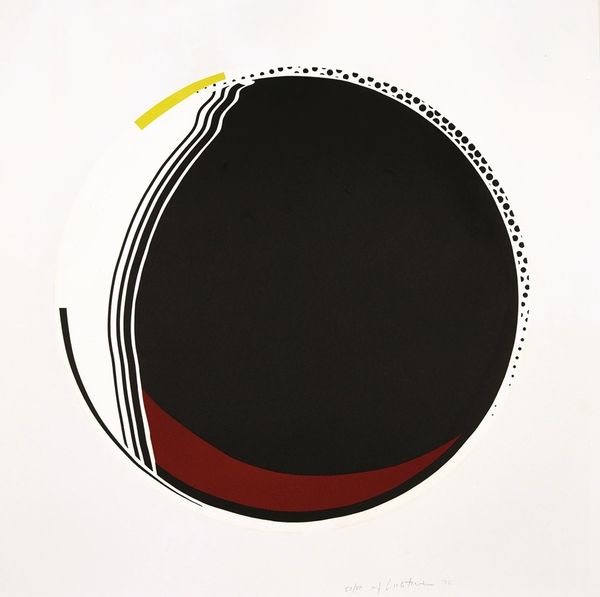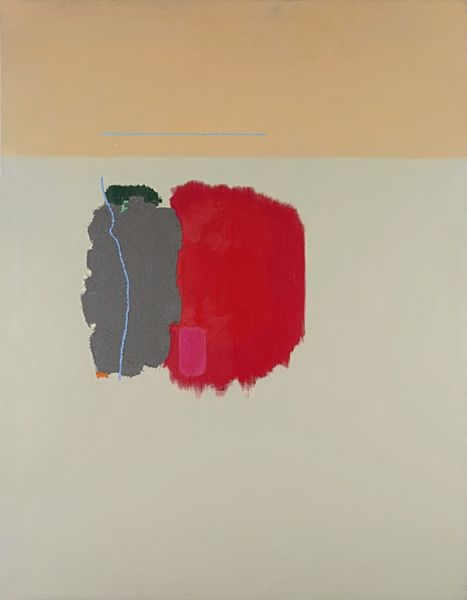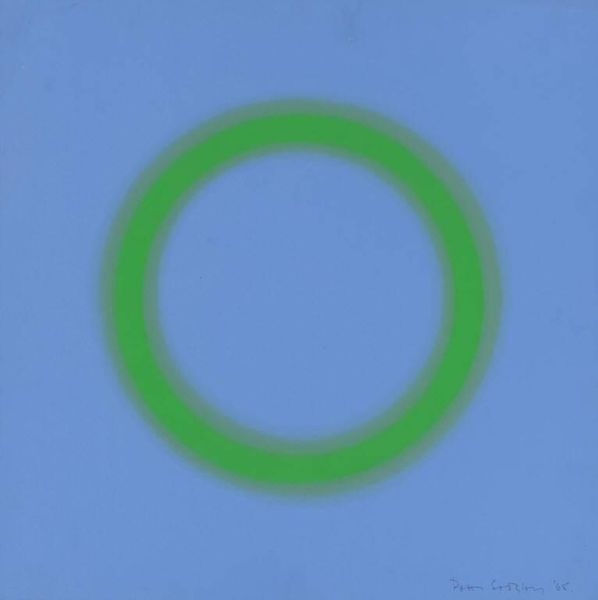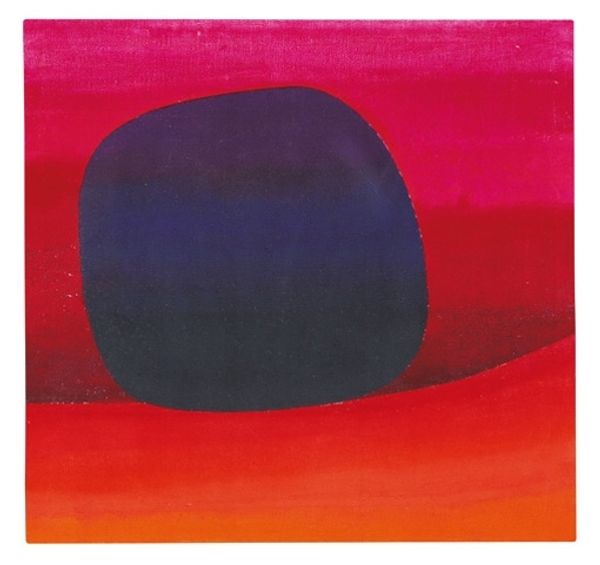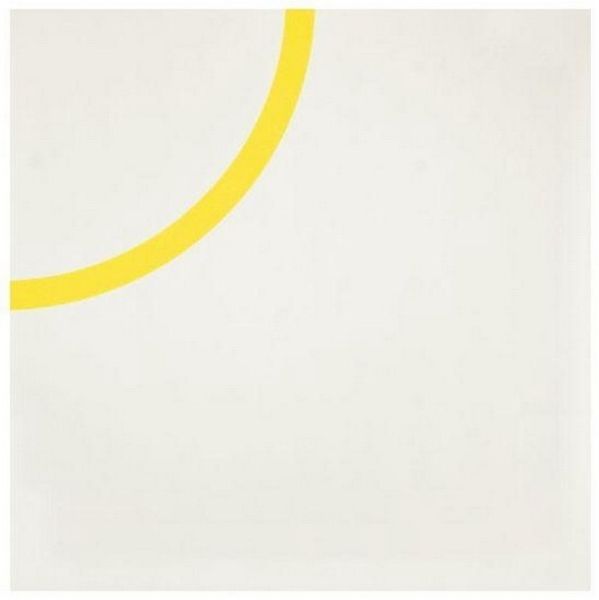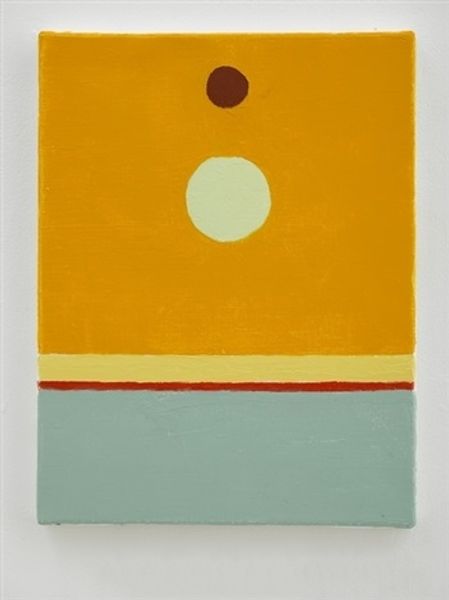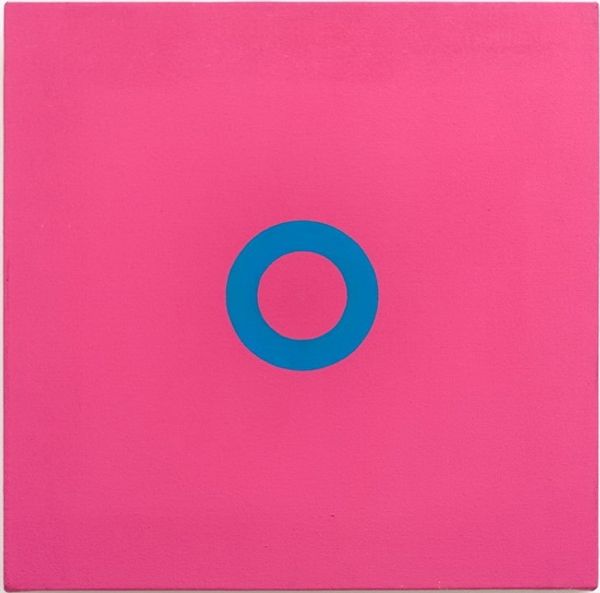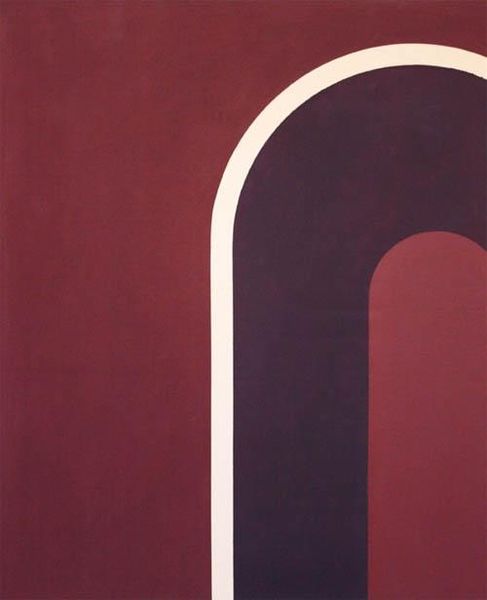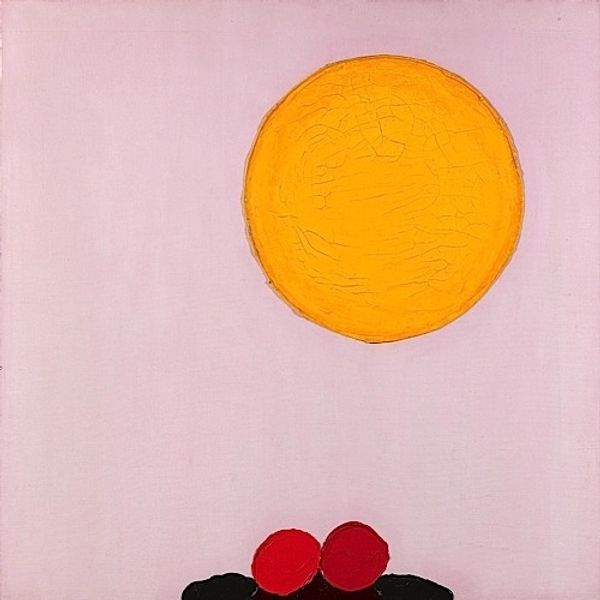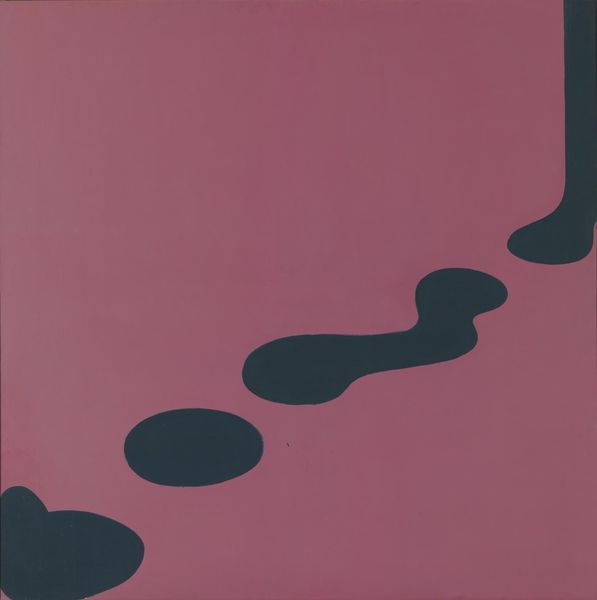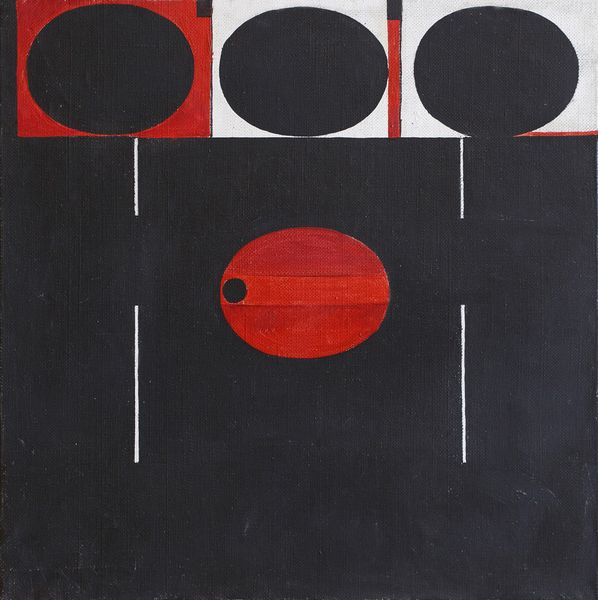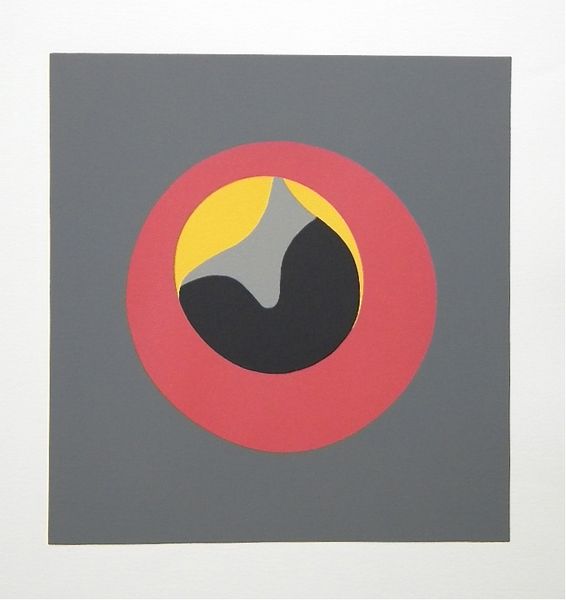
Copyright: Adolph Gottlieb,Fair Use
Curator: Adolph Gottlieb created this acrylic on canvas piece, "Mandala," in 1971, right in the middle of his "Burst" series. It's an interesting choice of title given its context, wouldn't you say? Editor: I find it strangely peaceful at first glance, despite the heavy black circle. The monochromatic background of what appears to be variations of pink creates such a dreamlike quality. It almost feels like I'm staring at a hazy sunset with something quite ominous lurking overhead. Curator: Yes, "ominous" captures the tension perfectly. It sits right at the intersection of formal concerns with the legacy of Abstract Expressionism and its exploration of mythology. Think of Jungian psychology – the Mandala symbolizes the self, but also points towards complex questions around self-awareness and societal constructs, which would have been major themes in the early 70s. Editor: Exactly! Gottlieb's choice of a ragged circle subverts that sense of completion and harmony often associated with mandalas. It feels… interrupted. And that little spot of white beneath it – a little glimmer of hope maybe? Or something equally foreboding? The square at the very bottom is intriguing, too. Curator: Well, Gottlieb was always interested in dualities, wasn't he? Order and chaos, light and dark… It’s worth remembering how color field painting stripped bare so much artifice. He emphasizes those basic visual components. This approach to composition removes much of what was understood from the previous eras of artistic intention, making way for something completely new. Editor: I see the color field element – that flattening effect which gives it this almost transcendental depth. It’s not something I typically go for, but in "Mandala," it sucks me in and invites pondering. What does the viewer bring to this scene and take away with them after all is said and done? It’s really the perfect meeting of formal qualities that also opens many windows for interpreting the world beyond the canvas. Curator: Absolutely. That tension between control and freedom, both on the canvas and in the world around it, becomes this interesting challenge we still find relevant today. Editor: Yeah, you’re right. Now, looking at it from the context you just put forward, it feels very loaded with a new kind of tension that keeps it very much alive after all this time.
Comments
No comments
Be the first to comment and join the conversation on the ultimate creative platform.
